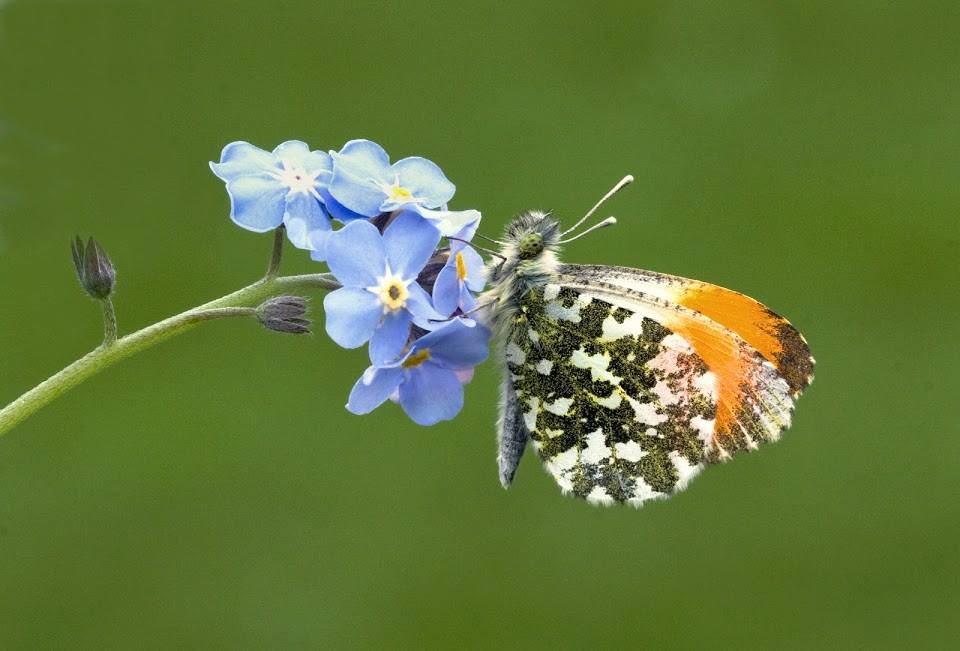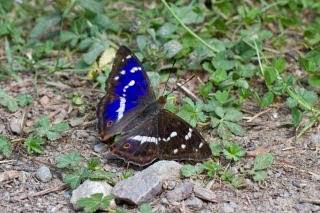
Beautiful Butterflies
We know the Heart of England Forest is rapidly developing into a fabulous place for butterflies so we asked Mike Slater, Warwickshire’s butterfly expert from Butterfly Conservation, to give us his thoughts on the Forest and what butterflies you can spot whilst you are out and about.
Well-managed woodland encourages butterflies
Until recently much of the Forest area wasn’t the best place to spot butterflies. Where the new Forest has been planted, much of the land was originally intensively farmed agricultural land with little place for much wildlife at all, and certainly not butterflies. Even parts of the existing woodlands needed better management. Woods such as Coughton Park and Moregrove Coppice were, in the past, planted with conifers making them very dark and cool. The ancient woods such as Bannam’s Wood were under-managed for many years and although many of the rare native flowers have survived, the wood was again too cool and shady for warmth-loving butterflies.
Then thanks to the Heart of England Forest and Felix Dennis’ legacy, everything started to change for the better. Existing woods began to be actively managed, and woods like Coughton Park had started to have their conifers removed. The improvements have been spectacular. Already 29 of the 37 species of butterfly that are found in Warwickshire can not only be spotted in the Heart of England Forest, but are also making their home here.
Silver-washed fritillary

The silver-washed fritillary, a bright orange butterfly, has rapidly colonised several woods and can now be seen flying along the main path in Coughton Park.
In July, the silver-washed fritillary spectacular courtship flight can be witnessed. It is worth pausing as you walk through the wood and witnessing the males fly around the females in flight, dusting them with their magical scent dust called pheromones. Once seen you will never forget the experience.
Orange tip

Walk through the new woodlands and you will also not be disappointed. Unlike many other plantations, some of the grassy areas have been seeded with native grasses and wildflowers, such as lady’s smock, which are now starting to colonise large areas. Earlier in the year these flowers attract one of the harbingers of spring, the orange tip.
It is the males of this delicate white butterfly which has bright orange tips. If you are patient you can watch them settle to feed on the flower’s nectar and then you can see the lovely green mottling on the underside of the wings. The grasses in these areas are also important.
In most areas around Spernal from late June you will see marbled white butterflies in their hundreds. Now a common sight in the Heart of England Forest, elsewhere in our countryside it is a very uncommon butterfly. Along with the marbled white you will see the common blue, not so common nowadays but as these grasslands develop with a greater abundance of wildflowers, populations of this butterfly will increase.
Purple emperor

Now the true test for any butterfly observer, can you spot the very elusive purple emperor? The purple emperor has only recently colonised the Heart of England Forest as newly planted sallows have now grown to the right size for this butterfly’s caterpillars. It is hoped that the Forest will eventually become one of the 3 largest colonies in the country for this species and then hopefully the sighting of the spectacular purple emperor males will be almost guaranteed.
Events
To find out more about butterflies in the Forest join Mike Slater on our Afternoon Butterfly Walk on Saturday 19th August from 1pm to 3pm, starting at Barton car park. Booking essential.



